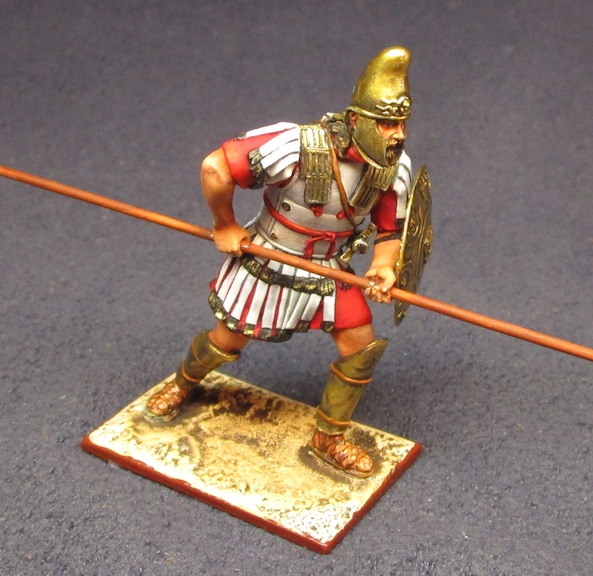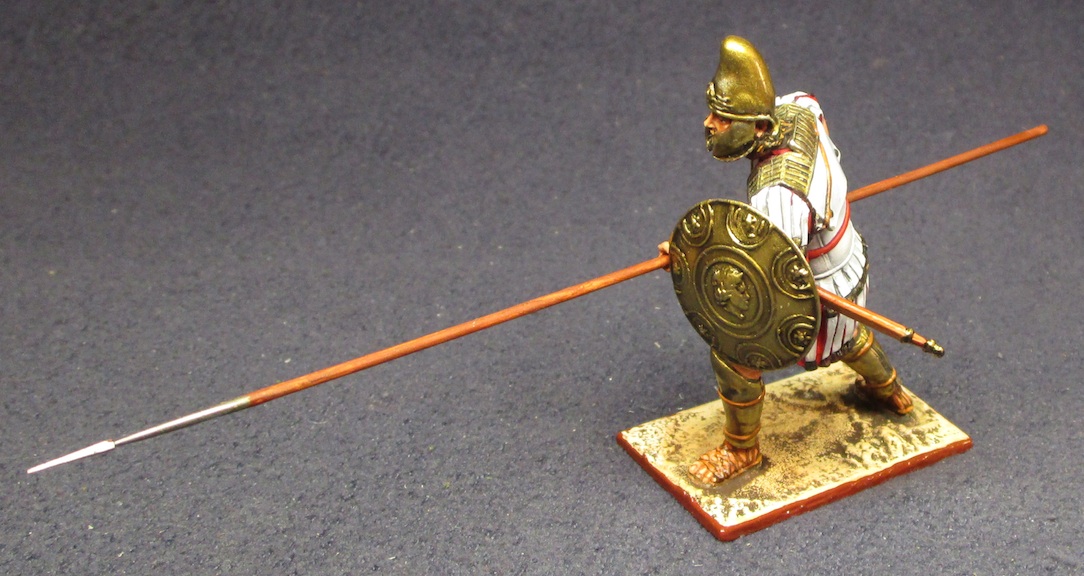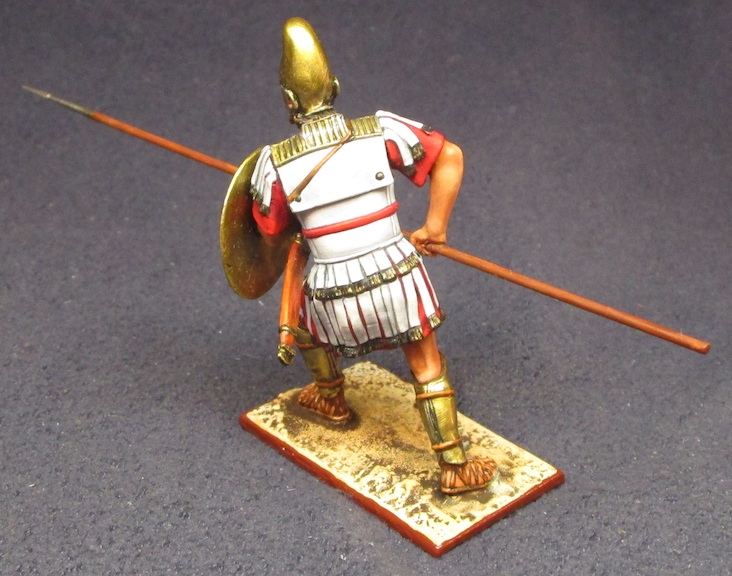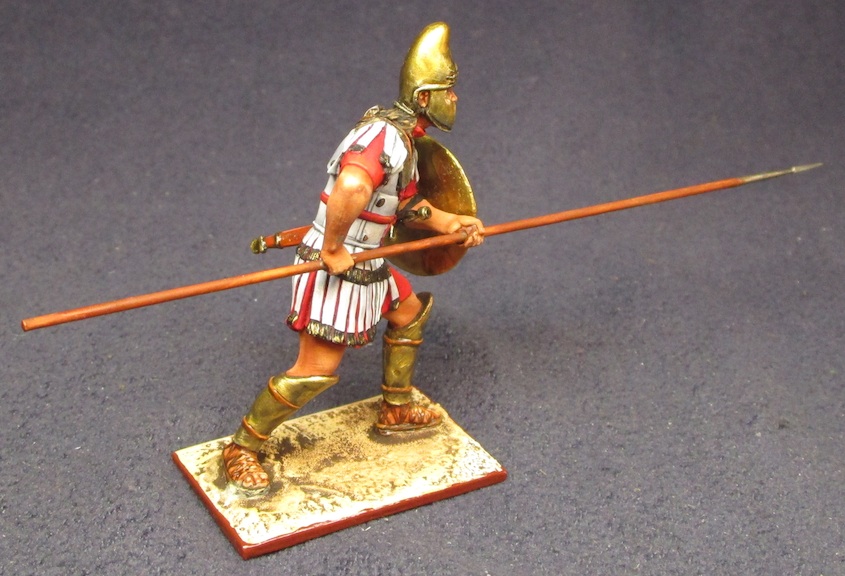Macedonian Hoplite


The Macedonian army subjugated the Greek states by the time of Philip's death allowing Alexander to assemble an army large enough to confront the Persian Empire. The Macedonians went on to defeat the Persians, most of the armies of India, and by the time of Alexander's death was preparing for the conquest of Arabia.
The Macedonian army ruled an empire that ran from the hills of Macedon to the river Indus. Keeping this empire intact proved too great for Alexander's successors.
The hoplite carried a round shield made of wood and covered in bronze. His principal weapon was a long wooden spear with an iron blade. A sword for close combat was also part of his gear.
The really unique aspect of the hoplite warrior in the years between 600-300 BC was that he fought as a member of a disciplined team and not as an individual. Lined up in phalanxes each man in his place, side by side and row by row they advanced into battle. Officers in the Greek phalanx battle formation served in the front ranks on the right-hand side. Given their leading from the front, officer losses were high.



 Up
Up